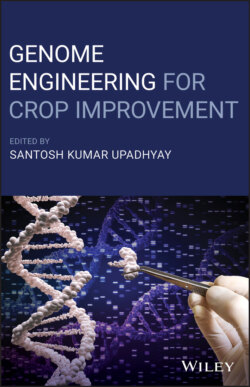Читать книгу Genome Engineering for Crop Improvement - Группа авторов - Страница 27
2.1 Introduction
ОглавлениеPlants provide us with essential energy‐rich compounds, minerals, vitamins, amino and fatty acids, and a wealth of health‐promoting compounds (Eckardt 2011). The cultivation of new, high‐yielding varieties and the ever‐increasing use of mineral fertilizers and pesticides has led to a significant increase in crop yields. However, the quality of edible plants related to human nutrition did not receive proper attention until the 1990s, when an increasing number of reports started to appear on inadequate diet and unbalanced nutrition in vulnerable, low‐income populations in many countries, leading to poor health, low productivity and an increase in chronic diseases (Eckardt 2011).
The quality of crops and their produce is a highly complex concept as it depends on the large number of plant traits which, in turn, are controlled by numerous underlying genetic and exogenous factors. In addition, the global increase in temperature, UV radiation, CO2 and ozone pollution, and drought and field salinization, place an even greater strain on crop performance. The need to adapt to constantly changing abiotic conditions leads to unpredictable changes in the biochemical composition of crops and, consequently, in the quality of food. In addition, biotic stress such as bacterial, fungal, and viral infections induce changes in the metabolic pathways with the aim of synthesizing self‐protecting biochemicals, but often at the expense of energy‐rich and health‐promoting compounds such as anthocyanins.
This chapter will focus on cereals and pseudo‐cereal plants that produce starchy grains since they are part of almost every meal we eat. Grains consists of the plant embryo – a miniature plant – and the seed coat that protects the embryo from abiotic and biotic stress. Storage compounds (starch, proteins, and lipids) that provide energy and building blocks for the young, developing plant after germination, are stored in the endosperm or in the cotyledons, while minerals are mainly stored in the aleurone layer or in the embryo. Nutrients and minerals are not evenly distributed within the grain (Pongrac et al. 2011; Singh et al. 2013, 2014; Vogel‐Mikuš et al. 2014; Mantouvalou et al. 2017). This is of high relevance for human nutrition, as cereals are usually processed before consumption, and certain nutritious compounds stored in the seed coat or embryonic tissue may be lost. There is, therefore, an urgent need to develop research tools that will provide better insights into the 2D and 3D spatial distribution of nutrients and minerals in cereals and the mechanisms behind these distribution patterns.
